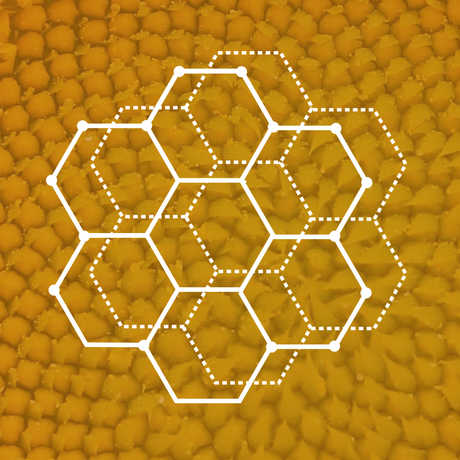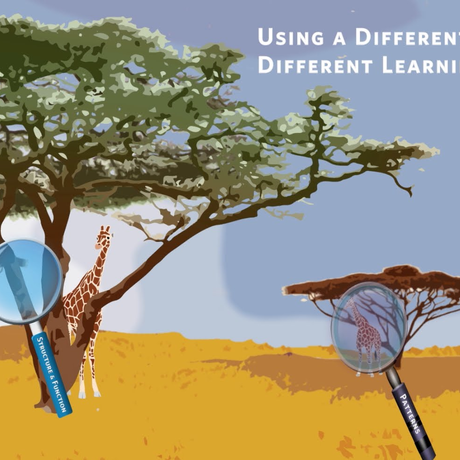
The first step in preparing to use the Crosscutting Concepts (CCCs) is to become familiar with what they are and how they are defined. This activity is a basic introduction to the names of the seven CCCs and an opportunity to start learning what they mean and how content might be sorted among them. This interactive, two-part activity and discussion helps to lay the foundation for deeper thinking about these ideas later on.
Watch the video above to get an overview, and use the detailed lesson plan below to lead this professional development activity for your team of educators.
Learning Goals
Participants in this activity will
- become familiar with the titles of the seven Crosscutting Concepts of the NGSS (CCCs)
- begin to build definitions of the seven CCCs
- see examples of content related to the CCCs
Approximate time
40 minutes
- Part 1: CCC Speed dating (10 minutes – interactive)
- Part 2: Name that CCC! (25 minutes – interactive and discussion)
- Part 3: Wrap up (5 minutes – discussion)
Materials
- CCC speed dating definitions PowerPoint slide
- CCC speed dating cards
- Station signs 1-7
- CCC stations (7 stations, 3-5 examples per station)
- CCC stations key (for facilitator only)
- CCC stations hand out (1 per participant)
- Optional: Appendix G
Prepare
- Print and cut out the speed dating cards. (If you can use cardstock for these, they will be a bit easier to work with.) Note that one complete set contains 14 cards (7 titles, 7 definitions). If your group has more than 14 people, you will need to print extra cards.
- If you don’t have a projector (or if you simply prefer using a handout), print copies of the CCC PowerPoint slide.
- Print the content examples for each of the seven CCC stations, as well as station signs numbered 1 – 7.
- If desired (and if you have time) you can add or swap in different examples of content to better suit the interests of your specific group of teachers.
- Print copies of the CCC stations handout for participants.
- If desired, print the CCC stations key for your own reference.
Background for Facilitators
The first step in preparing to use the Crosscutting Concepts (CCCs) is simply to become familiar with what they are and how they are defined. This activity is a basic introduction to the names of the seven CCCs and an opportunity to start learning what they mean and how content might be sorted among them. This will lay the foundation for deeper thinking about these ideas later on.
Before starting this activity, we recommend introducing the philosophy behind the CCCs with the Introduction to the CCCs presentation.
Procedure
Part 1: CCCs speed dating (10 minutes)
- Tell participants that the goal of the next activity is to give them a first introduction to how the Crosscutting Concepts (CCCs) are defined.
- Have each participant blindly draw a card. That card will have either the title of a CCC (e.g.; Patterns, Cause and Effect, etc.) or a CCC definition.
- Their task is to mingle around the room looking for their CCC match. If they have the title of a CCC, they are searching for the person who has the definition; if they have the definition, they are searching for the person who has the matching title.
- NOTE: if you have more than 14 participants in your session, clarify that there are multiple copies of each CCC title and definition, so they will end up in larger groups (for example, a group with 2 Patterns titles and 1 Patterns definition).
- When they find their match, the pair or group should sit down together at any table to show they have completed the activity.
- During the activity, walk around and help participants who are struggling to find their groups. You should also use some of this time to put out stations 1-7 for the next activity.
- Show the CCC Speed dating definitions slide. (Or, if you don’t have a projector, distribute this as a handout.) Ask participants if they correctly matched the CCC title with the definition.
- Pause and ask for any thoughts, comments, or questions about these definitions. Discussion questions may include:
- Were any definitions particularly difficult or easy to match. Why?
- Are any of these definitions surprising or confusing to you?
Part 2: Name that CCC! (25 minutes total: 15 minutes rotation, 10 minutes discussion)
- Tell participants that the goal of the next activity is begin to see what content or topics might be related to each CCC.
- Give instructions:
- Each participant will have a worksheet and will be visiting stations 1-7.
- At each station, they will see 3-5 examples of mostly science content that is related to one CCC. Some stations also include examples of non-science content.
- Their task is to identify the CCC that unifies all of the examples at the station. Participants should record their matches on the worksheet.
- The notes column can be used to jot down any thoughts about how they made the match, or ideas of other things that could fit into this CCC.
- They can work in pairs or individually.
- They can visit the stations in any order.
- Distribute the “CCC stations handout” and give participants about 10 minutes to complete the activity.
- When they have finished their station rotation, bring their attention back together for a group discussion.
- Go through the CCCs one by one and ask participants which station they identified as matching that CCC. For each CCC:
- Ask for a volunteer to explain why they thought those examples were representative of that particular CCC.
- Ask for any other content ideas that participants might have for each CCC.
Part 3: Wrap up (5 minutes)
- Have a short discussion asking participants to share their first impressions of the CCCs. Discussion questions may include:
- Do they think finding classroom connections for these ideas will be easy or challenging?
- Do they see any connections or overlap among the CCCs?
- How might the CCCs help integrate science with other subjects?

NGSS Demystified
This training toolkit will prepare you to lead PD for other educators.
Browse all of the videos at once.
